How to store beets in the cellar in winter?
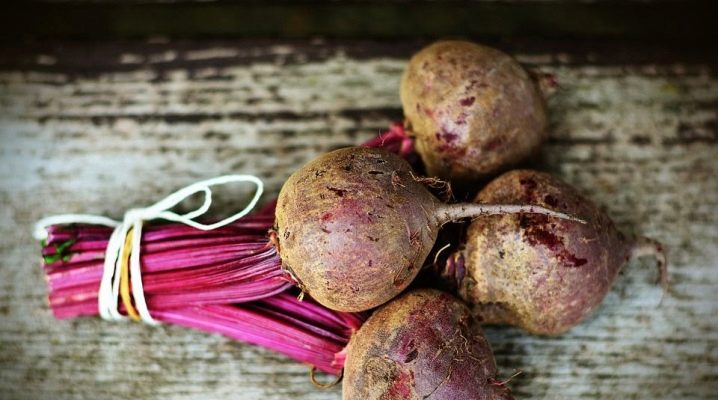
Beets have naturally high keeping rates, but the fruit, nevertheless, sometimes cannot lie all winter. And from a solid, pleasant to the touch product it turns into something almost shapeless. Most likely, the rules for storing beets were violated. Or maybe they were not initially respected.
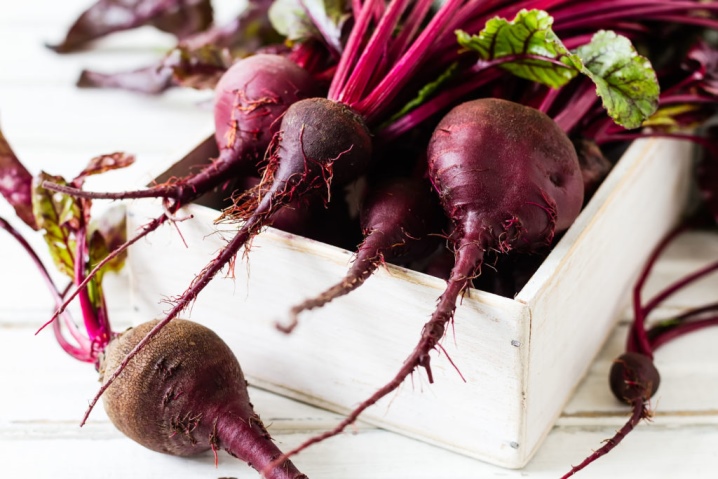
Preparation
Coolness and darkness, as it may seem to many, are not all conditions for storing beets. This is a whole complex of points, the combination of which will provide the most reliable storage, in which the harvested crop will successfully overwinter and will not upset the owners with substandard conditions.
For example, not everyone knows that the larger the beets, the worse they tolerate storage. And if you really choose varieties, then those that promise small but strong roots. This is precisely for the purpose of storing the crop more conveniently and longer.
Beets are removed from the site before the first frost, they are dug out very delicately so as not to injure the root crop, because otherwise fungi and viruses will overcome the vegetable faster.
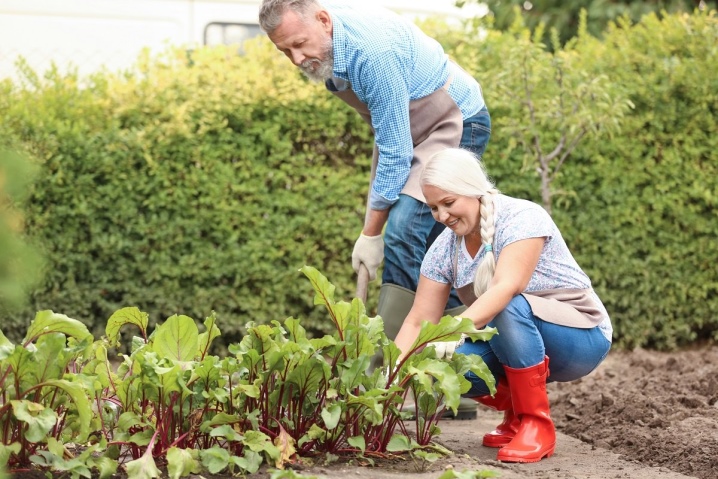
Diseases, by the way, are often transferred from the soil, which remains on the fruits. Therefore, after harvesting, the beets must be left in the sun for some time, and then it is easy to shake off the dried earth from it. And only then can it be lowered into the basement, cellar or other storage place. But it is impossible to wash the root crop with water - this contradicts the principles of long maturation.
Then each fruit (exactly each) will have to be examined for signs of deformations, diseases, and so on. With scissors - extremely sterile - you need to carefully cut the tops. But picking off the leaves with your hands is not good, you can damage the plant. It is not necessary to break off the beet tails. Sorted vegetables are sent to a dry place with good ventilation for a week, without the risk of direct sunlight. In a week they are ready to be sent to the cellar.
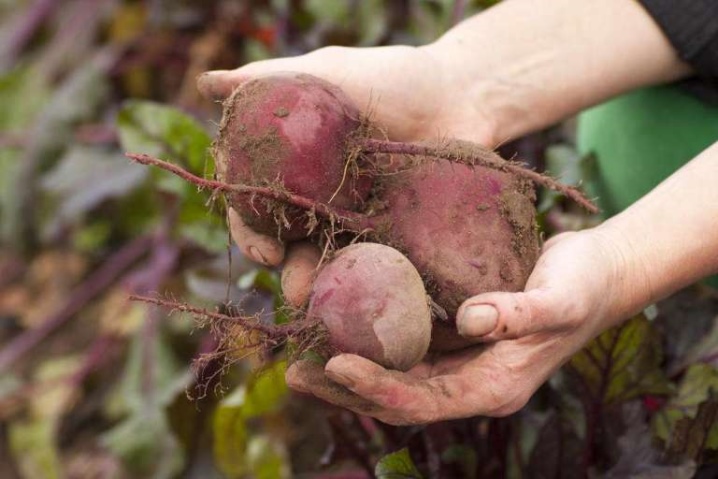
And a few more important recommendations for harvesting and drying beets:
- if you do not have time to harvest the crop before frost, the frozen product may deteriorate, and its taste will change;
- to understand that it's time to remove the beets, you can by the yellowed lower leaves, slightly lodged, as well as by the root crops protruding from the ground;
- there is no need to hesitate in harvesting - if the autumn is rainy, regular moisture will have a detrimental effect on the taste of the fruit;
- but if the autumn is mild, as they say "golden", you can hold the beetroot in the ground so that it picks up more vitamins from that (most of which accumulates in the last month);
- picking beets is better on a sunny day, if the vegetables stick out well from the ground, you can just pull them out with your hands;
- if you have to use a pitchfork and a shovel, you must act as carefully as possible, because if you damage a vegetable, it will not be suitable for storage;
- cutting off the tops, you can leave a centimeter tail;
- if you pick vegetables in sunny weather, it will be easy and simple to dry the beets, if in the rain it will take several days.
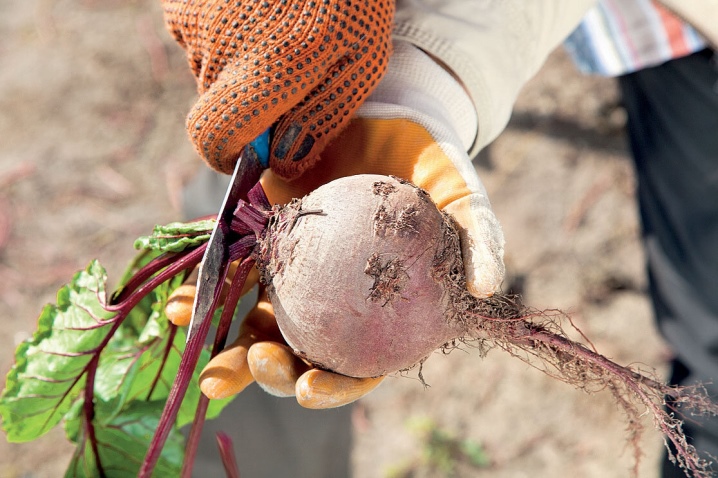
If everything is clear with the first preparatory stage, it's time to start preparing the storage room.
The necessary conditions
The best place for wintering beets would be a cellar.... It is good if this is a deep room, located far from underground heating mains, because only in this way a stable low temperature will be maintained in it. To keep the vegetables without problems, the cellar is dried and disinfected, and then also whitewashed with slaked lime.
Beets are optimally stored when:
- lack of sunlight;
- good ventilation;
- temperature 0-2 degrees;
- humidity in the region of 90%.
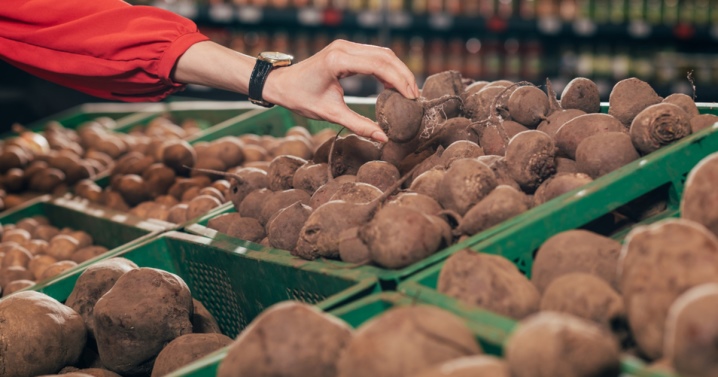
There are no other requirements, but these are strictly observed... Ventilation is worth considering if this issue has not been raised yet. These can be simple exhaust pipes, but if desired, the electric ventilation systems on the auto-control can also be installed. This is an investment that requires money, but no worries about the functionality of the cellar - the place will be with ideal conditions.
It is also important that only “friendly” products are adjacent to beets. Pears, apples and pumpkins are a bad neighborhood option. These products release ethylene, which forces ripening, which beets do not need at all. But beets will get along with potatoes and carrots.
How exactly to store, in what and in what way - there are many options, the choice depends on the characteristics of the cellar and the owner's desire to spend energy, time, funds on organizing optimal storage conditions.
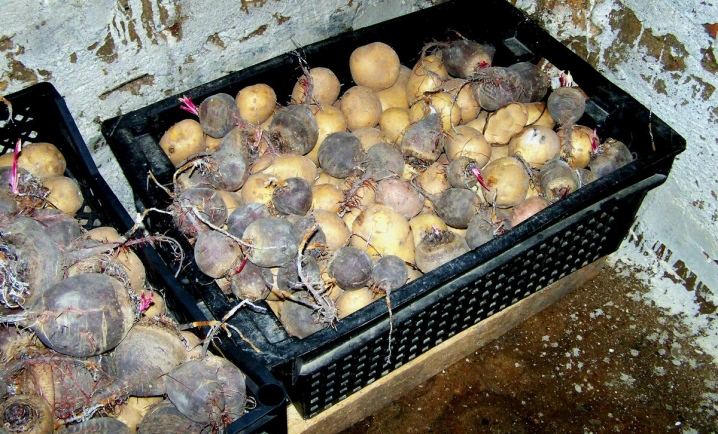
Storage methods
Each method is good, they all guarantee the safety of the beets - this is a matter of convenience for the owner of the cellar.
In packages
A tightly tied plastic bag is filled with condensation, everyone knows that. Moisture is dangerous for any vegetables, because it is because of it that the pulp rots. But this does not mean that beets cannot be stored in bags. Moisture will accumulate on the walls of the polyethylene, only if there is no ventilation at all in the cellar. If everything is fine with ventilation, there is nothing to worry about. Yes, and in the bags themselves, you can make several holes, and the issue is resolved.
This is the cheapest and fastest way to organize your storage.
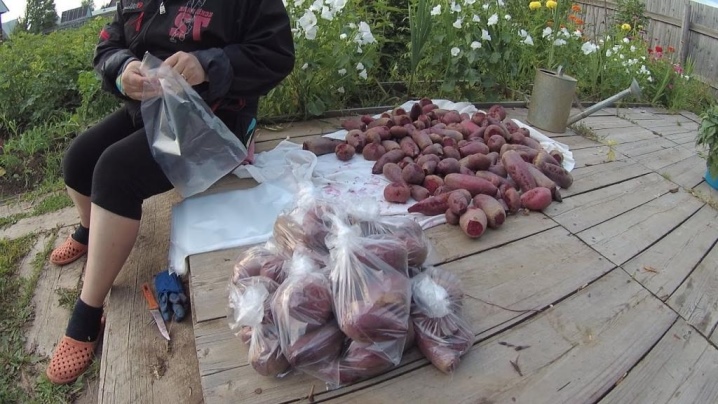
In sand
This means that sand boxes will be used. Before laying beets, the boxes should be rinsed and dried, or even better - treated after that with any suitable antiseptic. Drawers must also have holes in order to ventilate properly. And if this beet is still sprinkled with sand, the storage conditions will only improve.
The sand must first be calcined and slightly moistened. Plants will gradually take moisture away from the sand, but this will not harm them. Spread the root vegetables on a sand pillow so that the vegetables do not touch each other. And between them you also need to pour sand. However, instead of sand, there may be something else.
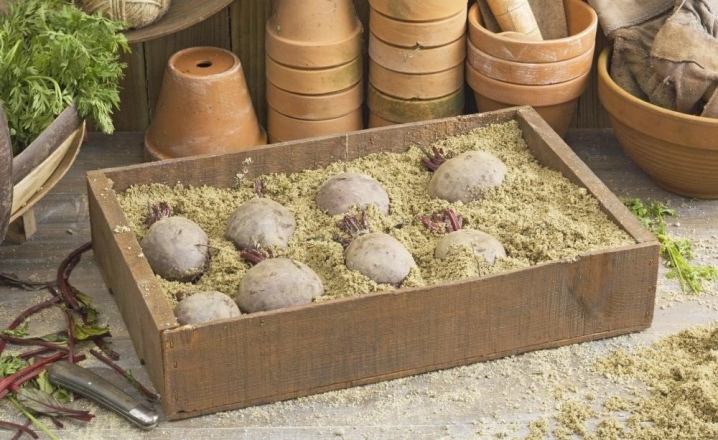
In sawdust
What sawdust is for: they also absorb excess moisture, which is only useful for beets. Fruits stored in this way will remain firm and firm for a long time.... In winter, the temperature can drop dramatically, and this is fraught with freezing of beets. So sawdust protects the plant from freezing, they retain heat well.
In the Urals, Siberia and regions with a similar climate, storage in sawdust is common and quite expedient.
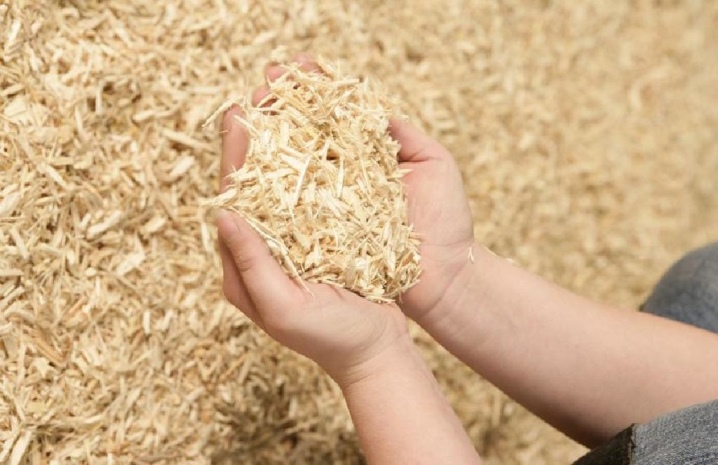
In boxes
Ventilated wooden boxes are suitable for storing various vegetables, and beets too. But they must be filled with something, if not sawdust, then shavings or ash, or the same sand. And if the boxes are put on top of each other, the space in the cellar will be saved.... True, the method has a drawback: from time to time it is imperative to check the safety of the beets, and for this, every time you have to remove the boxes from each other.
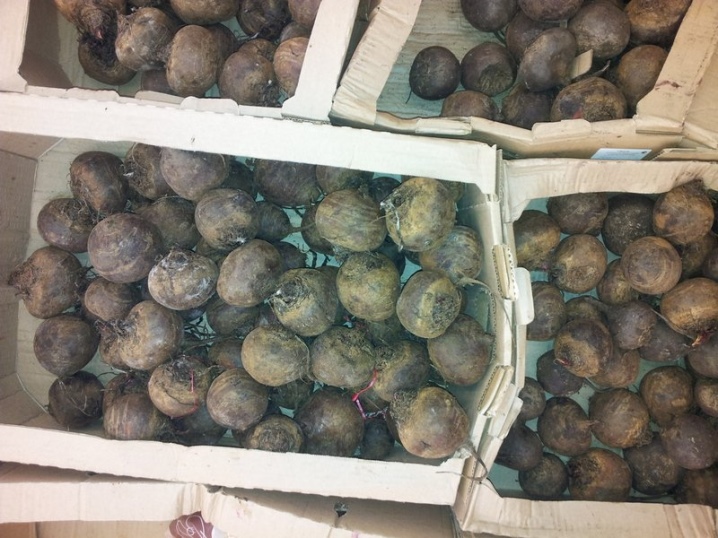
Top of the potatoes
Not everyone reacts normally to such a proposal, but nevertheless this method exists, and it is not so controversial. If there is not enough space in the cellar, what can you do? But it is necessary that the bottom layer of the bookmark is precisely potatoes. This will help both crops maintain moisture balance. You can't do this with carrots, they can't stand such a close proximity of the culture - it, carrots, will reduce the keeping rate of beets.
That is, plants can coexist, but on top of a carrot, beets are definitely not spread out.
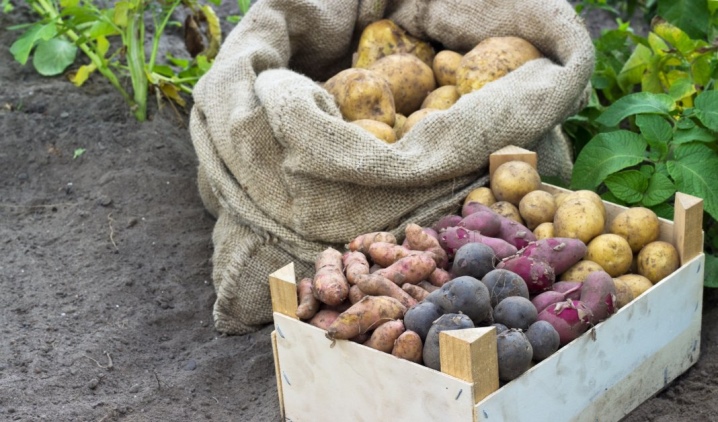
In clay glaze
This method can be considered quite old. The clay must be diluted with water, mixed well until the lumps disappear. You get a mixture that resembles fatty sour cream in consistency. And so each beet must be dipped in this clay "sour cream", and then let it dry.A glaze forms on the root crop, a real protective shell - it will not allow fungi and viruses to come close to the crop.
Also, this glaze will protect the beets from potential adverse conditions. For example, rodents that often visit cellars will be frightened by the smell of elderberry, and it can be mixed into clay. Dried beets in clay glaze should be laid out in boxes or containers. No top cover is required. By the way, not only in the cellar the fruits are stored in this way, but also in the apartment too.
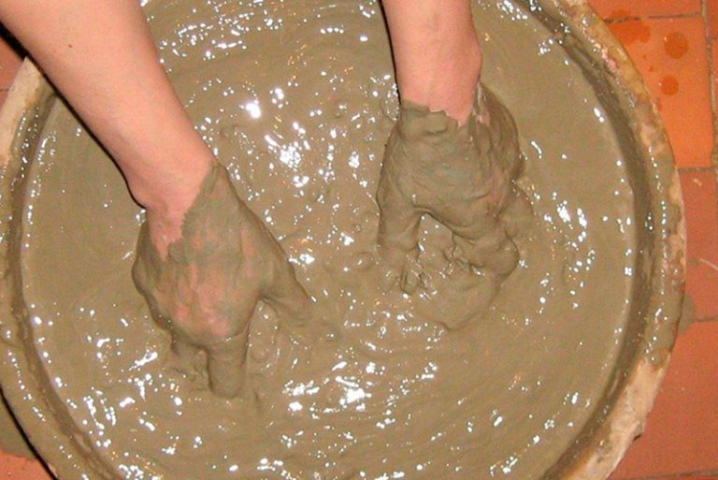
Other
- The product can also be stored in tight woven bags that allow air to pass through. That is, synthetics are immediately excluded, only natural fabric will do. Take bags of 20-40 kg in volume.
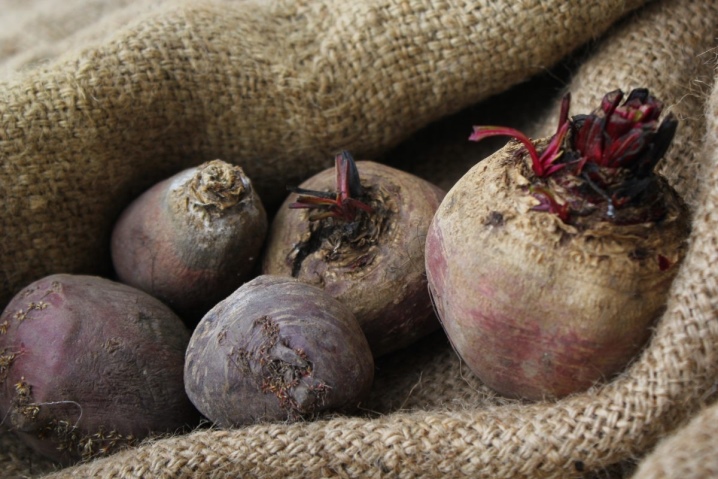
- You can simply store in bulk - that is, pour the prepared fruits into a heap... The height of the formed slide should not be higher than a meter. If we really do this, then so that the overhanging shelves on the walls of the room, as well as the adjacent walls, are with some clearance from the beet slides - the air circulation must be maintained exactly. The bedding can be any woven breathable material. Place the fruits with the roots down. Those that are larger will be at the bottom, small ones at the top of the pile.

- There is also an option with a saline solution: it is made in a proportion of 10 g per liter. After processing, the fruits must dry, and then you can already pack them into containers. Saline solution protects the crop from pathogenic flora, prevents it from rotting.
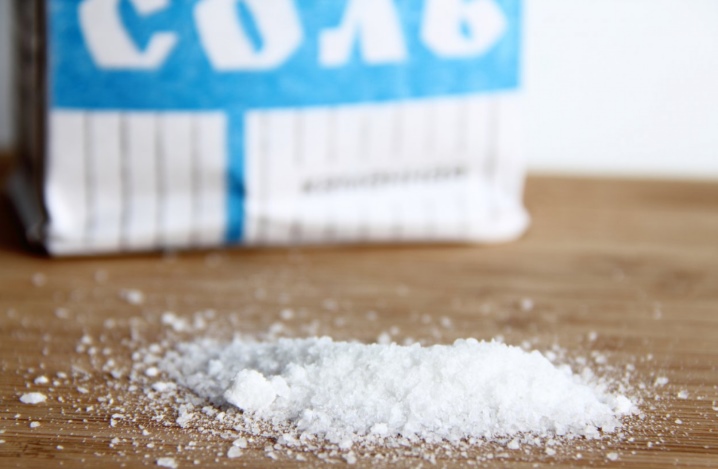
Why do beets become soft?
First, not all varieties are designed for long-term storage. For many summer residents, this comes as a surprise, because they did not even choose the variety especially. So, if the purpose of growing this crop is not only seasonal use, it is necessary to select medium-late or late varieties for planting.
Such as, for example, "Nosovskaya flat", "Mulatto", "Libero", "Red ball", "Bravo", "Cylinder" and others.
They have an excellent keeping quality, they keep their fresh appearance for many months.

Why is the beetroot rotting or flabby in the cellar?
- The main reason is the lack of ventilation... If the air does not flow to the fruits, they will rot. This can happen if the fruits are in a bunch, and those that are below are completely not ventilated. Or stored in boxes, plastic boxes with no air holes.
- Pests can also spoil beets. Therefore, you can use herbal repellents, natural and safe remedies. For example, mint, horseradish leaves, wormwood, walnut leaves are also suitable.
- Drying of root vegetables is the reason that beets wilt... The vegetable simply lacks moisture. You can even put a plastic wrap on the bottom of the box, and already on it - beets. But the protruding droplets of condensation from time to time still have to be removed. That is why storage in bags does not stand skepticism: if the ventilation in the cellar is adjusted correctly, the bags will not make the beets soft, on the contrary, they will not allow it to become soft, lose its shape.
- If the beets are stored in the refrigerator (and this also happens), they will also crumble and flabbily often. And this is also due to insufficient humidity. Root bags can be filled with wet sand and the problem is solved.
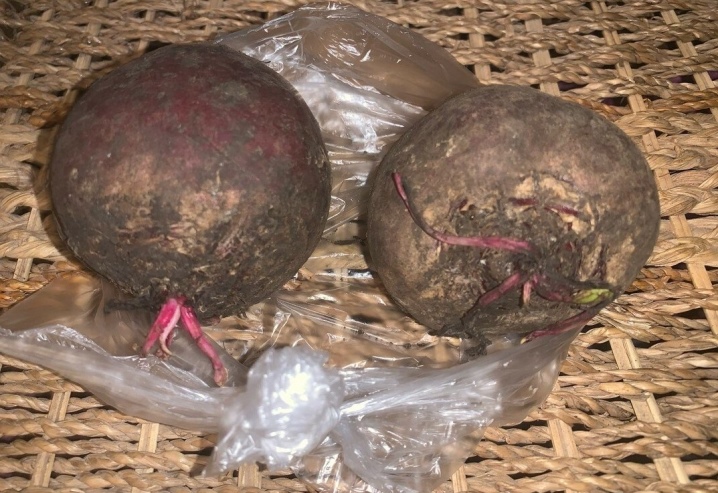
Perhaps, there was a sick beet in the cellar, unselected, it infected its neighbors, and now there are many soft specimens among the stored product. This is also a common scenario, therefore it is imperative to sort the culture before going to the cellar. Probably, the method of sprinkling root crops with sawdust, sand, shavings, ash is the most optimal, preventing several storage problems at once.
Let the harvest be stored for a long time and not lose its main properties!
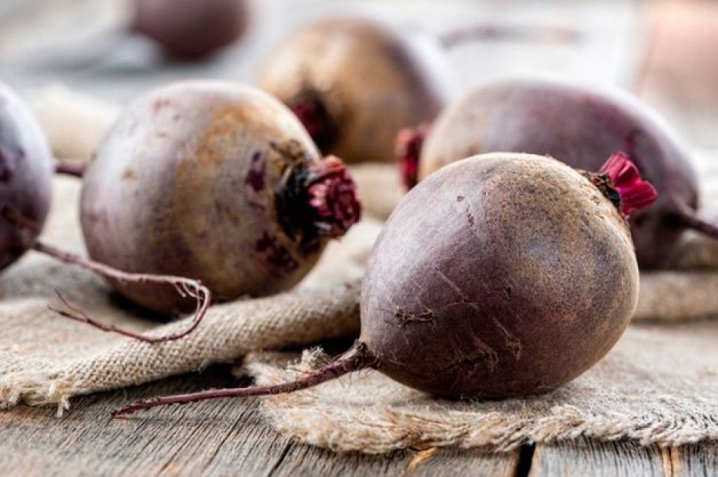












The comment was sent successfully.